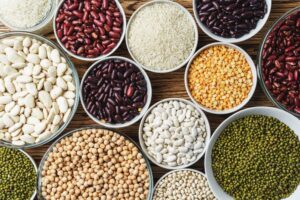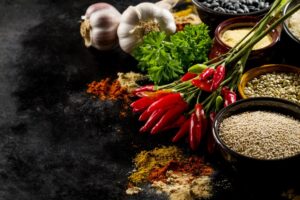Spices are more than just ingredients used to flavor food—they are rich in history, culture, and health benefits that have stood the test of time. From their role in ancient trade routes to their impact on modern-day wellness, spices are integral to the culinary traditions of many cultures around the world. In this blog post, we will explore the profound influence spices have had throughout history, how they shape global cuisines, and their health benefits that continue to enhance our lives today.
The Historical Significance of Spices:
The journey of spices began thousands of years ago, when they were considered as precious as gold. Spices such as cinnamon, cloves, and black pepper were highly sought after in ancient civilizations. They were not just used for flavoring food; they also had medicinal properties and were used for preservation, religious rituals, and even in the embalming of royalty.
The Spice Trade, which spanned continents, connected the East to the West and transformed the global economy. Spices were traded along the Silk Road, one of the most well-known ancient trade routes, linking Asia, Africa, and Europe. The allure of spices motivated explorers, including Vasco da Gama, who sought a sea route to India in the 15th century to control the spice trade. This pursuit led to the establishment of European colonies and the eventual blending of culinary practices from all over the world.
As spices became more accessible, they began to shape the food culture of the regions they touched. The global exchange of spices helped introduce new flavors and cooking techniques that would evolve into distinct culinary traditions. Today, spices continue to play an essential role in the flavor profiles of cuisines worldwide.
Spices and Global Cuisine:
Spices are the foundation of countless dishes that define regional food cultures. From the fiery heat of chilies to the warmth of cinnamon, each spice tells a unique story about the land and people it originates from. For instance, in Indian cuisine, the combination of spices such as turmeric, cumin, and cardamom creates complex, flavorful curries and stews that are deeply rooted in the country’s culture and history. Similarly, Mexican cuisine features the bold flavors of chili, oregano, and cinnamon, making dishes like tacos, enchiladas, and mole unforgettable.
In the Middle East, spices such as saffron, sumac, and cinnamon are essential for dishes like kebabs, pilafs, and tagines. These spices give the cuisine its rich, aromatic quality and contribute to the region’s reputation for having some of the most flavorful food in the world.
As globalization has brought the world closer together, many cuisines have adopted spices from other regions, leading to a fusion of flavors that creates exciting new culinary experiences. In cities like New York and London, chefs incorporate spices from diverse cultures to create innovative dishes that reflect a blending of global flavors. This exchange has elevated the role of spices, making them an essential part of modern gastronomy.
The Health Benefits of Spices:
Beyond their contributions to flavor and culture, many spices offer incredible health benefits. For centuries, spices have been used not only to enhance the taste of food but also to improve overall health. Spices like turmeric, ginger, and garlic are known for their medicinal properties and have been used in traditional medicine for centuries.
Turmeric, for example, contains curcumin, a compound with powerful anti-inflammatory and antioxidant properties. Studies have shown that turmeric can help reduce the symptoms of arthritis, improve brain function, and even lower the risk of chronic diseases like heart disease and cancer. Similarly, ginger is renowned for its ability to alleviate nausea, aid digestion, and reduce inflammation.
Cinnamon is another spice that has long been used for its health benefits. It helps regulate blood sugar levels, making it particularly beneficial for those with diabetes. Its antioxidants also support the immune system, reduce inflammation, and promote heart health.
Other spices like garlic, cloves, and cumin are known for their ability to boost the immune system, improve digestion, and reduce inflammation. By incorporating these spices into our diets, we can enjoy not only more flavorful meals but also a boost in overall well-being.
Sustainability and Spices:
As the world increasingly turns toward sustainable food practices, spices are playing an important role. Many spices are grown in small, family-owned farms that focus on organic and eco-friendly farming methods. These farming practices promote biodiversity and help reduce the environmental impact of agriculture.
Spices like turmeric, coriander, and chili peppers require fewer resources to grow compared to other crops, making them a more sustainable option for enhancing flavor in meals. Additionally, because many spices are grown in tropical climates, they often do not require large amounts of water, making them more adaptable to regions facing water scarcity.
By supporting sustainably sourced spices, consumers can contribute to fair trade practices and help ensure that farmers receive fair wages while preserving the environment. Choosing ethical and sustainable spices is an important step toward building a more environmentally friendly food system.
Conclusion:
Spices are more than just seasonings—they are a testament to the rich history of trade, exploration, and cultural exchange. From their role in ancient trade routes to their impact on modern-day health and wellness, spices continue to shape the way we cook, eat, and live.
By incorporating spices into our meals, we not only add flavor but also connect to a global tradition that spans continents and centuries. Whether you’re enjoying a curry, sipping ginger tea, or sprinkling cinnamon on your oatmeal, you’re taking part in a culinary journey that unites cultures and promotes health.
Spices are a journey through time, taste, and wellness, and their power to enhance the human experience is timeless. So next time you reach for that jar of cumin or add a pinch of chili powder to your dish, remember that you’re not just flavoring food—you’re embracing a centuries-old tradition that continues to connect us all.





